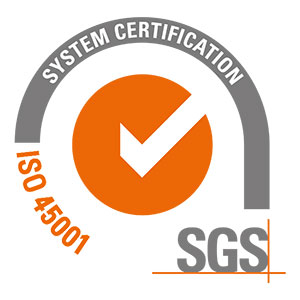Quantitative vs. Qualitative Respirator Face Fit Testing: Which is Right for Your Workplace?
Who is this article for?
- Employees requiring health and safety training
- Companies looking to upskill their teams
- Companies with legal and compliance requirements
- Individuals who need additional qualifications and training
Respirator face fit testing is an essential aspect of workplace safety, ensuring that respiratory protective equipment (RPE) provides a proper seal for the wearer.
At G&L, we offer both quantitative and qualitative face fit testing methods, each with its own advantages. Understanding the differences between the two can help you determine the most suitable approach for your workplace.
Quantitative face fit testing
Quantitative face fit testing involves the use of the TSI Portacount Plus Respirator Fit Tester. This method, compliant with HSE Operational Circular HSE OC 282/28 and Guidance Note HSG53, measures microscopic particles in the ambient air to determine if the chosen respirator forms an adequate seal. Quantitative testing can assess all types of RPE, including disposable respirators, half-masks, full-face respirators, power-assisted respirators, and breathing apparatus.
Qualitative face fit testing
On the other hand, qualitative face fit testing relies on the wearer’s subjective response to a sweet or bitter-tasting aerosol. This pass/fail test is suitable for disposable and half-mask respirators. While qualitative testing is simpler and more cost-effective, it may not provide the same level of accuracy as quantitative testing.
When deciding between the two methods, consider factors such as the type of RPE used in your workplace, the number of employees requiring testing, and your budget. Quantitative testing offers a more objective and precise assessment, making it suitable for industries with higher-risk environments or when precise measurements are necessary. Qualitative testing, with its simplicity and lower cost, can be a practical choice for workplaces with a lower risk profile or a smaller number of individuals requiring testing.
Regardless of the method chosen, it is crucial to prioritise face fit testing to protect employees from a wide range of hazardous substances, including solid particles like asbestos dust, lead dust, and welding dust; liquid particles such as paints and pesticides; mists like cutting fluids and oil mist; vapours like solvent vapours and mercury vapours; and gases like carbon monoxide and chlorine.
At G&L, our team of experienced fit testers with Fit2Fit Accreditation can guide you in selecting the most appropriate face fit testing method for your workplace. We offer reliable and professional testing services, ensuring compliance with regulatory requirements and promoting a safe working environment for your employees. Find out more and book face fit testing.




